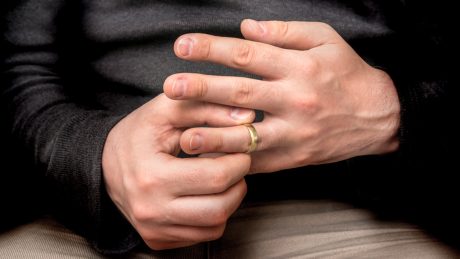Nineteen years after a consent order was made on divorce, a husband applied for it to be set aside on the basis of alleged fraudulent non-disclosure by the wife. The wife applied to strike out the husband’s claim and to summarily dispose of the same.
In dismissing the husband’s claim, the court considered the ambit of the duty of non-disclosure, the use of a ‘summary’ procedure to dispose of set aside claims, and the legal test for cases of fraudulent non-disclosure. Toby Atkinson and Lydia Fowler, who acted successfully for the wife in having the husband’s application dismissed along with Nicola Hogg, review the decision.
Background
The parties married in 1997 and separated in 2001 with their financial remedies claim settled in April 2002 by way of a consent order.
The parties had two children together, both of whom were conceived via IVF at a fertility clinic in California. They had their first son, ‘M’, in March 2001 before they separated. In September 2004, the wife (‘W’) approached the husband (‘H’) about having a sibling for M, and the parties agreed to have a second child. H sought £100,000 from W as a “bond” against any future child maintenance claims. A second child, ‘N’ was born in November 2005. H acknowledged parentage but was not involved in N’s life.
Both M and N had profound learning difficulties. Unable to cope with the costs of their care needs, W pursued Schedule 1 proceedings to obtain financial support from H. Substantive Schedule 1 orders were made in 2011, 2019 and 2020 in relation to the financial needs of both M and N (“the Schedule 1 orders”).
Between 2002 and 2021, the parties were engaged in additional litigation, including unsuccessful applications by H to allow him to tell M that his mother was not his biological mother and to challenge the paternity of N. The latter of these applications was settled by having the Californian fertility clinic disclose their medical log. This conclusively revealed that H was N’s father. It also revealed that W had undertaken fertility treatment in 2002 (two months before the signing of the 2002 financial remedy order) and had a third embryo implanted in 2004 (that did not carry to term). This fertility treatment and implant formed the basis of H’s most recent claim against W.
Proceedings
In 2021, H applied to set aside the 2002 financial remedy order pertaining to the parties’ divorce and the Schedule 1 orders on the basis of fraud and non-disclosure of information that was material to the facts of the case.
H’s case was that W should have disclosed her fertility treatment in 2002 and the implantation of the embryo in 2004 and that this non-disclosure materially affected the above orders. H made the following three allegations:
- By taking hormones for one month, two months prior to the making of the final consent order in divorce proceedings, and failing to disclose this to H, W was guilty of fraudulent non-disclosure by wrongful concealment despite W ceasing or at least pausing this hormone treatment without progressing to impregnation.
- The order made in 2011 would have been substantially different had the court known that in 2004 W had miscarried an embryo, having unilaterally used one of the frozen embryos left from a previous pregnancy attempt.
- H also alleged forgery of his signature in relation to the embryo used for the pregnancy in 2004 and in respect of the birth of N.
W cross-applied to have the case struck out and/or for matters to be heard at an abbreviated hearing.
Judgment
The matter was heard by Mr Justice Mostyn on 12 October 2021 at an abbreviated hearing in which he dismissed H’s set aside application as being “totally without merit”.
Mr Justice Mostyn concluded that on the evidence there had been no fraud by W on any occasion. Even if there had been, the judge found, the concealed matters would not have led either to a reasonable person withdrawing his consent to any of the orders or a significantly different order being made on any occasion by the court. He found in favour of W as follows:
- W had been under no legal obligation to disclose to H those preparatory, paused, steps to conceive in 2002. To be guilty of fraud, a person had to practise the deception to achieve a personal or financial advantage and therefore had to do something more than mere preparatory, inchoate, paused groundwork. W did not cross the line between preparatory steps and deception proper, and therefore her actions did not amount to fraudulent conduct.
- H claimed that the 2011 order would have been substantially different had the court known that the wife miscarried in 2004, having unilaterally used one of the frozen embryos. Mr Justice Mostyn found H’s claim to be “patently absurd” in circumstances where, later that same year, the parties had entered into the agreement for W to conceive N with an embryo inseminated by H. His clear finding was that had this information been known to the court, the decision would have been the same.
- It was an abuse of the court’s process for H to seek to raise W’s alleged forgery of his signature on the formal agreement with the clinic in circumstances where he accepted that he fully and freely entered into, and acted on, the agreement that had led to the birth of N.
Conclusions
Mr Justice Mostyn’s judgment sets out a comprehensive and helpful analysis of the case law in relation to fraud and non-disclosure, particularly the changing emphasis regarding the burden of proof in fraud cases.
It should also be noted that this case was published without any anonymisation of the parties in accordance with Mr Justice Mostyn’s recent judgment in BT v CU [2021] EWFC 87. In that judgment, he recorded that his default position from now on will be to publish financial remedy judgments without anonymisation, save that any children will continue to be granted anonymity. It is clear that if anonymity orders are now to be granted, there must be a specific set of reasons pertaining to the case, rather than just generic assertions of privacy.
You can find further information regarding our expertise, experience and team on our Divorce and Family pages.
If you require assistance from our team, please contact us.
Subscribe – In order to receive our news straight to your inbox, subscribe here. Our newsletters are sent no more than once a month.







